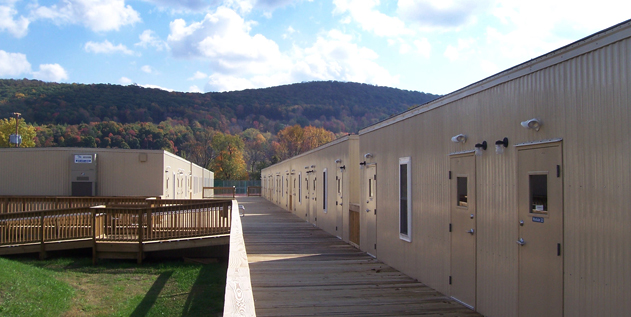Modular construction allows for a faster building process, but is it better?
"We are noticing a surge in interest as construction developers are trying alternate ways to build," said Tracey Daniels, communications director for Modular Building Institute, an international nonprofit trade association based in Charlottesville, Va.
Modular construction is a process where portions of the project are built off site. Once together and sealed, the modules become one integrated wall, floor and roof assembly, according to the organization's website. Structurally, modular buildings generally are stronger than conventionally constructed buildings because each module is engineered to independently withstand the rigors of transportation and crane lifting onto foundations.
Modular construction, which includes both permanent and movable buildings, reduces waste through factory production, Daniels said.
Once together and sealed, the modules become one integrated wall, floor and roof assembly, according to the organization's website.
Daniels said as bigger companies – such as Skanska, based in Blue Bell, and Whiting-Turner Contracting Co., based in Allentown, take on or incorporate modular elements to their projects, smaller companies are beginning to do so, too.
Another benefit is time savings, she said. Instead of having to wait for site work to be done, construction on the building can take place simultaneously, allowing for projects to be done more efficiently.
"You can shave 30 to 50 percent off of the timeline," Daniels said.
Modular construction also is used frequently for urban housing,
hotels, hospitals and schools to allow for minimal site disruptions and to reduce on-site traffic, she said.
One of the main points to consider is that if modular construction is the chosen method, it should be decided early in the design process, since it can be harder and more costly to redesign a project, she said.
Modular construction's impact on boosting productivity could be enhanced with the growth of green buildings and technology.
According to a 2011 Smart Market Report from McGraw Hill Construction on "Prefabrication and Modernization: Increasing Productivity in the Construction Industry," the re-emergence of pre-fab and modular as a new trend is tied to the rise of building information modeling (or BIM, which uses software to create 3-D project designs). It also is connected to the increasing interest in green buildings, which influences design and construction processes.
The report takes a look at pre-fab and modular processes and their impact on productivity metrics for the construction industry, including costs, safety, project schedules, quality, eliminating waste and
creating green buildings. The findings from a survey of 809 contractors, architects and engineers showed that:
• 66 percent report that project schedules are decreased; 35 percent said by four weeks or more.
• 65 percent report that project budgets are decreased; 41 percent said by 6 percent or more.
• 77 percent report that construction site waste decreased; 44 percent said by 5 percent or more.
With increasing interest in lean construction, the strong influence of green construction and the rising use of BIM technologies, these factors
make pre-fab and modular process a critical trend in the construction industry, the report said.
Here is a useful link to an article about construction waste and modular construction.
http://constructioninformer.com/2013/02/19/modular-construction-promises-less-construction-waste/
And another about a recent modular construction project at Muhlenberg College in Allentown.
http://www.nrb-inc.com/us/dormitories-accomodation/commerical-modular-buildings/three-story-dorm-addition#
Pedersen Brian ( 2013 December 06) Can modular construction boost productivity? Retrieved on December 11, 2013 From
LVB.com.











